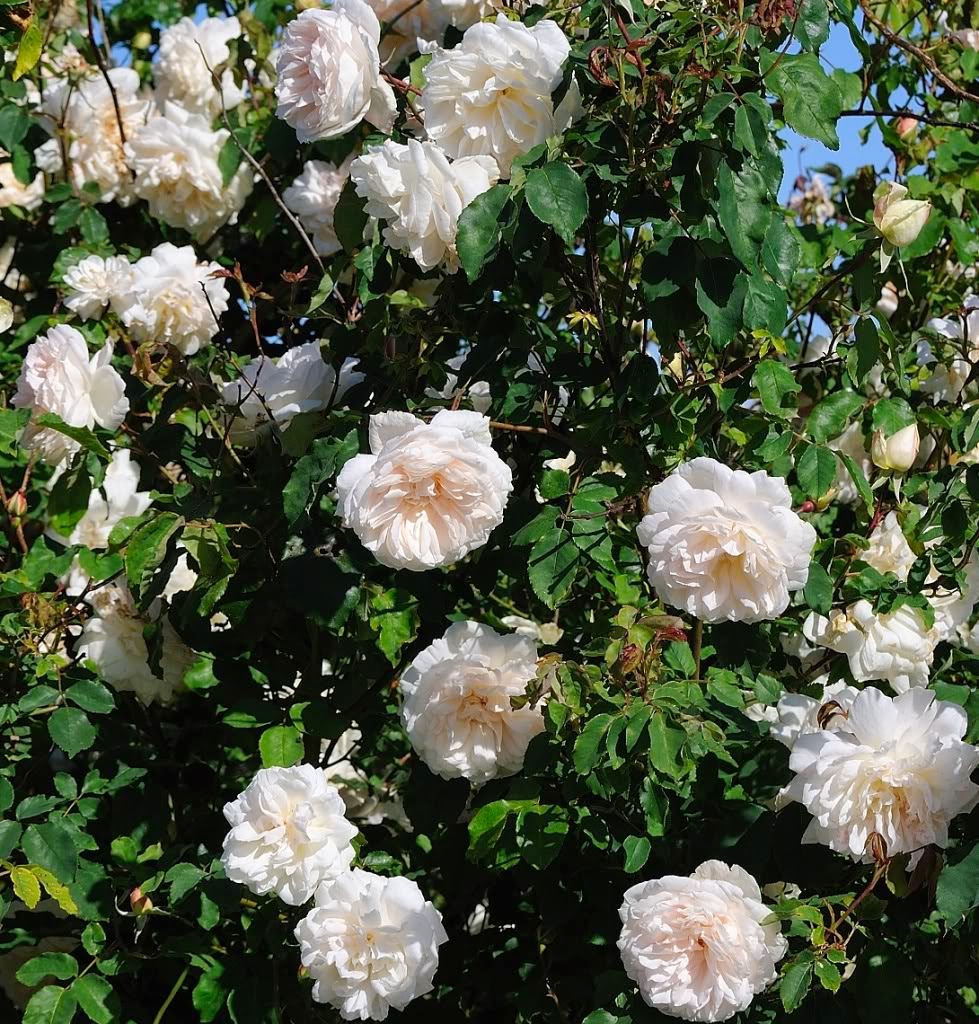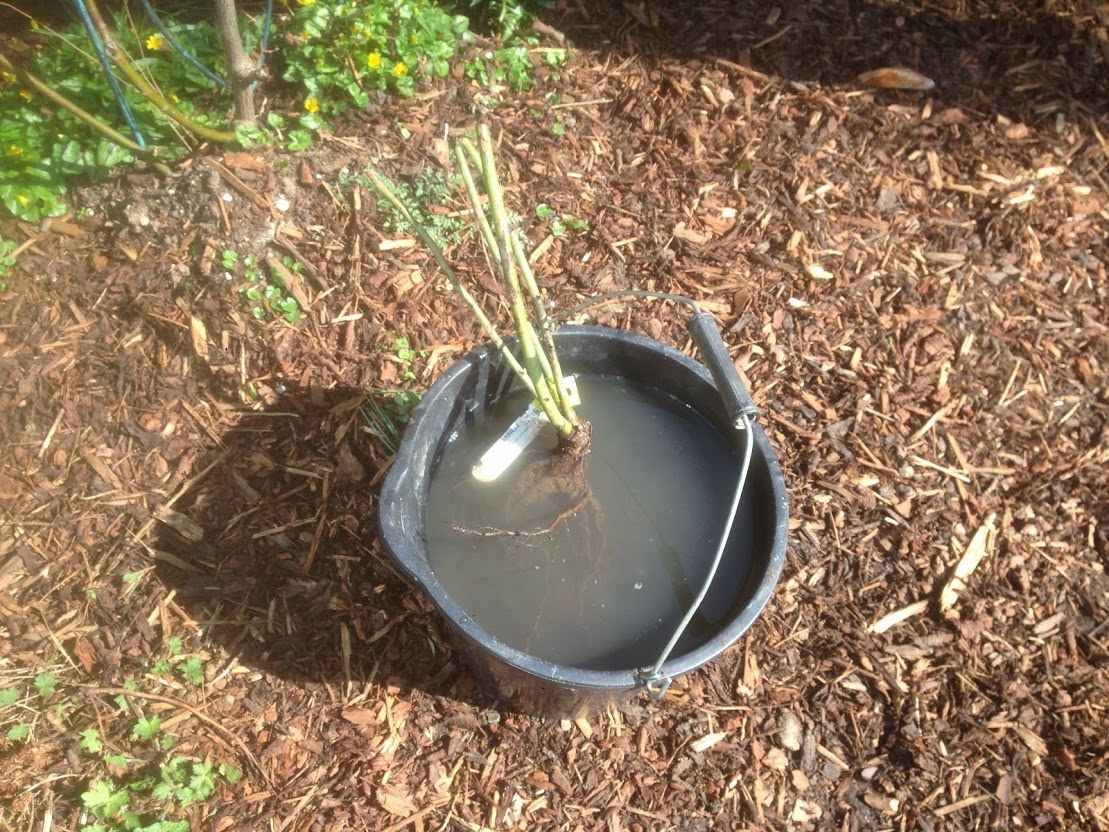I briefly thought about having a clematis and rose together on the new trellis on the front of the shed, but have now decided to keep it simple with a white rose.
I plan to use Mme Alfred Carrère – introduced by Joseph Scwarz in France in 1879.
This is a climber that has a tinge of light pink when in bud and as the flowers are first opening but brilliant white when fully open.
It has few thorns, which is handy given it’s position.

It is cheaper to get bare root roses than roses in pots – bare rooted plants are only available between November and early April when the plants are not in growth,
The most important thing to remember about bare rooted roses is not to let them dry out – you can keep them in the bag they are delivered in for a few days (keep them somewhere cool and frost free), but if it will be more than a week until you plant out you then you should ‘heel’ them in. This just involves digging a shallow trench and temporarily burying the roots.
When you are ready to plant out the rose in its permanent position you should soak the roots in a bucket for several hours:

Next dig a hole – ideally about 18 inches deep and wide enough to accommodate the roots without bunching or curling them.
I plant my roses with the graft union just below the surface. This is because the root stock is generally selected for the convenience of the nurseryman rather than to impart any specific growth quality to the rose, so it is as well to let the scion root directly by burying it slightly.

Backfill the hole with a mixture of compost and soil and firm in. If you have something around to mulch the surface this will help avoid it drying out. Finally, give the rose a good soaking with water.

Generally roses delivered this time of year have already been pruned, but in the event it has not, you can remove any diseased or dead wood and cut back the healthy stems to about 6-8 inches (cut just above a bud).For the first time I used mycorrhizal fungi, which comes in powdered form and is sprinkled on the roots and the base of the hole – a small packet is about a £5 and will do about 8 plants.
Mycorrhizas are fungi that take sugars from plant roots and form a network of strands that act as an extension to the root system allowing the plant to increase the area from which it can gather moisture and nutrients from the soil.
There are mixed opinions about whether an artificial application of the fungi will make a difference in a garden setting, but the world of gardening is full of contradictory and confusing opinions and advice – my own view is the best way to find out what works is to try it yourself. So we shall see..